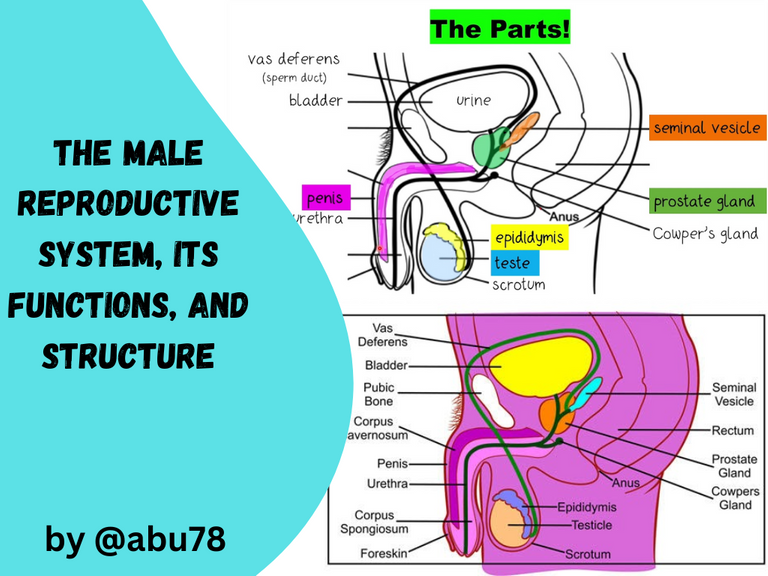The male reproductive system and its functions
Greetings all and sundry, I am much excited to write and share with you another topic. Today it would be about the male reproductive system and its functions. As I stated in my previous post that my next post would be about the male reproductive system and here I come to do justice to that.

The male reproductive system is a system that comprises of the male organs with each having its specific functions. They include the prostate gland, epididymis, testis, scrotum, penis, spongy urethra, ductus deferens, and seminal vesicle. Let's quickly look at each one of them including their functions.
Before touching on the individual functions of the organs comprising the male reproductive system, we would look at the general function of the reproductive system.
The male reproductive system is responsible for the transfer or delivery of spermatozoa into the reproductive tract of the female.
The male reproductive system is also responsible for the production, maturation, and storage of spermatozoa.
Scrotum
This is pigmented skin, connective tissue, smooth muscle, and fibrous tissue. It has two different compartments and they are the testicular end of a spermatic cord and the epididymis. Each of these compartments contains one testis.
Testes
Testes are equivalent to the ovaries in the female reproductive system, i.e. they are the male reproductive glands. They have about 2.5 cm wide, 4.5 cm long, and about 3 cm thick. The testes are suspended in the scrotum and have three layers of tissues surrounding them. These layers are; Tunica vasculosa, Tunica albuginea, and Tunica vaginalis.
Each of the testes contains 200-300 lobules with each lobule also containing 1-4 convoluted loops called seminiferous tubules. Groups of interstitial cells found in between the tubules secrets the hormone testosterone. Basically, the function of the testes is to produce spermatozoa.
Spermatic cords
This suspends the testes in the scrotum with each cord containing a testicular artery, lymphatics, and testicular veins.
Seminal vesicles
This is a long tube about 5 cm that joins the deferent duct leading to the formation of the ejaculatory duct. The seminal vesicles is responsible for the contraction and expulsion of the stored content in them including the seminal fluid.
Ejaculatory ducts are formed from the combination of the duct from a seminal vesicle and a deferent duct. It is two tubes about 2 cm long which passes via the prostate gland to join the prostatic urethra. The ejaculatory ducts are responsible for the transport of seminal fluid and spermatozoa to the urethra.
Prostate Gland
Prostate gland has about 8 g weight but grows progressively as one grows. It is responsible for secreting a milky fluid that contains about 30% of the quantity of semen. This is what gives the semen a milky appearance. Also, the prostate gland contains a clotting enzyme that helps thickens the semen in the vagina when released into it to help the semen remain close to the cervix.
Urethra
It is about 19-20 cm long and has three parts namely; prostatic urethra, membranous urethra, and penile urethra. It also has 2 sphincters.
About 100 million spespermatozoa per mL are produced in the testes. When ejaculation doesn't take place after several months, the epididymis reabsorbs the semen.
This is where I would end my male reproductive system topic. You can leave a comment in the comment section so we interact on this topic.
Thank you all for your time and attention.
The references given below are sites where you can learn more about the male respiratory system.
Reference 1
Reference 2
Reference 3
Reference 4

The bladder? The Pubic bone?
As far as I am aware, the bladder has no role to Play in reproduction. Pubic bone more or less is not much of a direct contributor, and strictly speaking, not an organ.
Do you mind discussing their specific functions as it concerns reproduction in males with valid verifiable research works. perhaps I am not aware of the latest findings. Otherwise, I would suggest deletion / word restructuring in that regard.
Ohk, well noted, I got that information from one of the references provided didn't find any functions to them, would make that changes as soon as possible. Thanks for the correction.